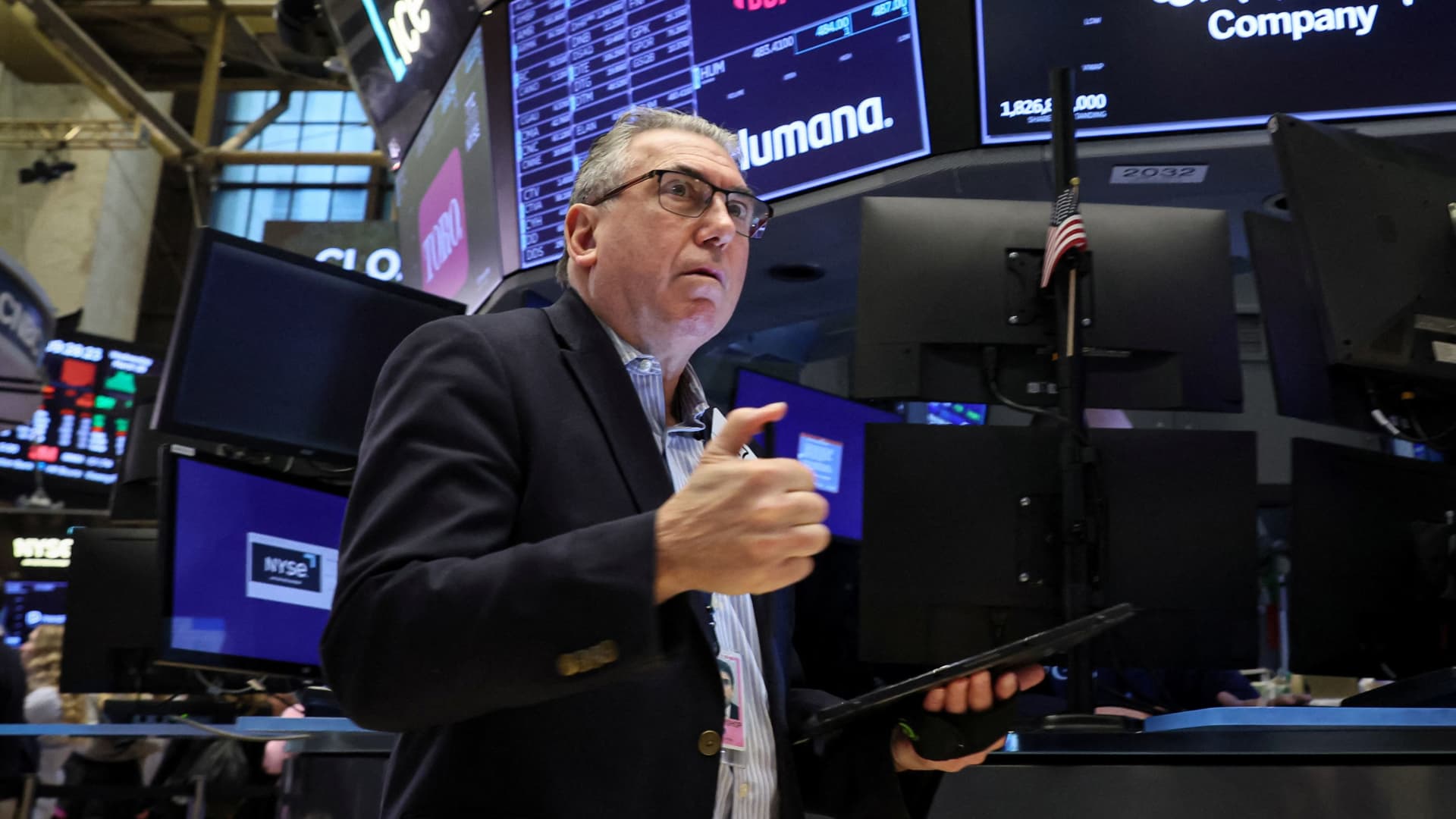
The U.S. labor market is finally showing signs of cracking , but next week’s inflation data will be key in determining whether the Federal Reserve puts an end to its regime of rate hikes. The past week has seen reports showing job openings dropping , unemployment claims coming in higher than expected and layoffs outside of the technology sector. Friday’s jobs report could surprise to the upside again, but many economists expect the labor market to continue to weaken in the months ahead. Fed officials have been pointing to the tight labor market as an area of concern for inflation, using it as evidence that it hasn’t tightened rates enough. But after the regional banking crisis in March, traders have started to dial back their expectations for Fed rate hikes this year. Next week’s readings for consumer and producer price indexes could cement the case for a Fed pause, even as central bankers like Cleveland Fed President Loretta Mester call for rates to rise higher still. “I know the Fed has said they would like to [keep hiking]. Friday’s employment data will play into that, of course, but I think more important is the CPI and PPI, which we get next week,” said Randy Frederick, managing director of trading and derivatives at Charles Schwab. The stock market has cooled in the first week of April, with the Nasdaq Composite falling three straight days as investors shifted to defensive sectors. Utilities and health-care stocks have outperformed while bond yields have dropped, moves that could signal investors are battening down the hatches for a recession. XLV 5D mountain Health care stocks have outperformed in April But if next week’s inflation data shows that prices are also cooling, that could be a relief for investors, said Phillip Toews of Toews Asset Management. “I’d be biased toward market upside right now, for the two reasons that there’s so much money betting on risk off and north of $5 trillion in money markets and Treasurys that is potentially going to come in,” Toews said. “The markets have wanted real traction on the Fed pivoting for forever, and I think we may have just seen that,” he added. Earnings ahead Next week will also feature the first big reports of the first-quarter earnings season, with Delta Air Lines , JPMorgan Chase and a handful of other names set to report. After months of strategists and investors complaining that earnings estimates are too high, they’ve started to fall — but with a catch. “Consensus expectations are for EPS to fall by 7% year/year, the largest decline since 3Q 2020 and a significant deterioration from the -1% year/year growth posted in 4Q 2022. However, if analyst projections are realized, this quarter will represent the trough in S & P 500 earnings growth,” Lily Calcagnini and David Kostin of Goldman Sachs said in a note to clients Thursday. If the trough in earnings is close, then the stock market could be in for a big year. But more quarterly reports like Simply Good Foods could yield a different scenario. On Wednesday, the packaged-food company beat estimates for its quarter ended Feb. 25, but it kept its full-year sales forecast the same and warned that gross margins were under pressure. The stock fell more than 4% that day. In other words, the forward-looking earnings forecasts may still be too optimistic. “In a sense, it is encouraging to see that estimates more realistically reflect the upcoming economic slowdown, but when one looks at 2024 estimates, they call for 12% growth. Likely that number might have to come down as well,” said Angelo Kourkafas, investment strategist at Edward Jones. Calendar Monday: Earnings: Tilray Brands 10:00 a.m. ET – Wholesale inventories Tuesday: Earnings : Albertsons, CarMax 6:00 a.m. ET – NFIB small business index Wednesday: 8:30 a.m. ET – Consumer price index 2:00 p.m. ET – FOMC minutes Thursday: Earnings: Progressive, Fastenal, Delta Air Lines, Infosys Ltd. 8:30 a.m. ET – Jobless claims 8:30 a.m. ET – Producer price index Friday: Earnings: UnitedHealth, JPMorgan Chase, Wells Fargo, BlackRock, Citigroup, PNC Financial 8:30 a.m. ET – Export and import price indexes 8:30 a.m. ET – Retail sales 9:15 a.m. ET – Industrial production 10:00 a.m. ET – University of Michigan consumer sentiment 4:15 p.m. ET – Fed H.8 data on assets and liabilities of U.S. commercial banks





